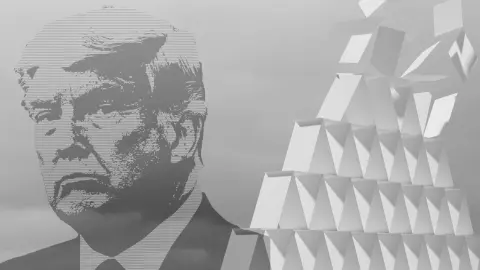Energy markets shaken by tariff talk and sanctions
Energy prices have had a volatile start to the year driven by a combination of sanction and tariff risks, along with colder weather. While the floor for energy markets is likely higher than originally expected, we still see prices trading lower from current levels
Oil stuck between tariff and sanction risk
Oil prices have had a volatile start to the year with the market coming into 2025 with the expectation of a fairly comfortable oil balance. However, demand through the winter has been stronger than expected due to colder weather, while sanction and tariff risks have left the outlook more uncertain.
The sanction risks facing the oil market are predominantly coming from Russia and Iran. Before President Biden left office, he tightened sanctions on the Russian energy sector. The aim of sanctioning a large proportion of Russia’s shadow tanker fleet was to reduce Russian energy revenues by forcing Russian crude prices below the G-7 price cap. The uncertainty over the impact saw buyers of Russian oil looking for alternatives, and that provided support to the Middle East physical market. However, until now, seaborne crude oil exports from Russia appear to be continuing with little disruption. The potential supply impact from these sanctions could be as much as 700k b/d, which would be enough to erase the global oil surplus we forecast for this year.
The other sanction risk is related to Iran. President Trump recently signed a directive to increase economic pressure on the country by strictly enforcing sanctions, which does put a large amount of oil supply at risk, possibly as much as 1m b/d.
President Trump has already made it clear that he wants OPEC to increase output. If he is successful in convincing the group to do that, it would help offset any potential losses from Russia and/or Iran. However, convincing OPEC may prove difficult, particularly considering that Saudi Arabia has a fiscal breakeven oil price of above $90/bbl.
The supply risks facing the market due to sanctions mean that the floor for oil prices is probably a little higher than we had expected coming into this year. However, much will depend on how trade relations progress. A tougher stance from the US on trade will be a concern for global growth.
Storage concerns prop up European gas prices
European gas prices have been fairly strong so far this year. TTF has traded to its highest levels since October 2023 on the back of storage concerns. Stronger gas demand from the power generation sector, stronger heating demand, and the loss of Russian pipeline flows through Ukraine mean that storage is falling at a quicker-than-expected pace.
EU storage ended January at a little under 54% full, still above the European Commission’s intermediary target of 50%; however, it was below last year’s level of 70% full and the 5-year average of almost 61%. The region will get through this winter with few issues but will face a larger task of refilling storage through the injection season. Our numbers suggest we would need to see a 17bcm YoY increase in net injections through the summer to hit the Commission’s storage target. Also complicating matters is that the TTF forward curve does not incentivise storing gas for the 25/26 winter, with summer 2025 prices trading at a premium to winter 25/26 prices. Therefore, there has been increasing talk that governments may look to subsidise refills to ensure that the EU hits its storage target of 90% by 1 November.
The price spread between TTF and Asian spot LNG means that LNG cargoes should continue to be redirected towards Europe. The forward curves suggest this should continue through much of the summer, which should ensure adequate gas supply for Europe. This year, we should also continue to see the ramping up of new LNG export capacity, predominantly from the US.
Russian LNG was also affected by sanctions announced by the US, which included sanctioning operational LNG projects in Russia for the first time. However, the two projects recently sanctioned make up only a very small share of Russia’s LNG export capacity.
Given that Europe faces a bigger job in refilling storage for next winter, it suggests that the floor for the market is higher than we originally thought. However, we also believe the upside in the market is capped. Gas prices are trading at levels where it makes more economic sense for the power generation sector to switch from gas to coal, even when you consider the rally in European carbon prices. Furthermore, the investment fund long in TTF seems fairly stretched and, so the appetite for speculators to increase their position significantly more (in the absence of a fresh bullish catalyst) is likely limited.
EU gas storage falling quicker than expected (% full)

This publication has been prepared by ING solely for information purposes irrespective of a particular user's means, financial situation or investment objectives. The information does not constitute investment recommendation, and nor is it investment, legal or tax advice or an offer or solicitation to purchase or sell any financial instrument. Read more
Download
Download article
6 February 2025
ING Monthly: Top Trumps and the global economy’s House of Cards This bundle contains 14 Articles